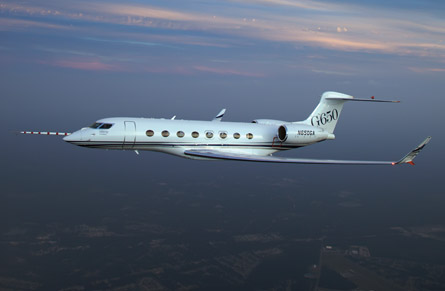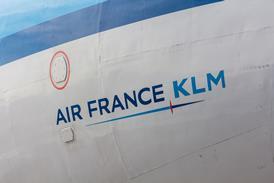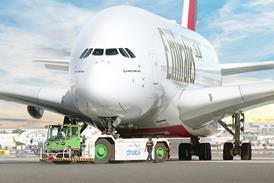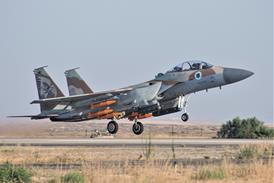Like a well-oiled machine, Gulfstream Aerospace is pumping out record-breaking numbers of large-cabin business aircraft from its home base in Savannah, Georgia - with no obvious signs of slowing down.
The 102 large-cabin jets the airframer will build this year - a mix of G450, G550 and G650 models - represent a 13% increase from the 90 large-cabin aircraft it produced in 2011, itself a 2% increase over the previous record of 88 large-cabin jets produced in 2008, according to parent company General Dynamics.
 |
|---|
© Gulfstream More than 200 orders are in the pipeline for the large-cabin G650 |
The new G650, which Gulfstream says will enter service mid-year, is a driver of the positive trend. Compared with 2011, green G650s' share of deliveries will jump from 11% to 20% as production increases to 24, from 12. By contrast, the share of the company's "mid-cabin" models (G150 and G280) and legacy large-cabin models (G350/450/500/550) will decrease from 16% to 13% and 73% to 67%, respectively.
Gulfstream delivered 107 green jets in 2011: 17 mid-cabins, 78 G450/G550 family aircraft and 12 G650s. It is targeting 117 for this year: 15 mid-cabins, 78 G450/G550 family aircraft and 24 G650s. Gulfstream builds two variants in its large-cabin family: the G350 is a shorter-range variant of the G450 and, similarly, the G500 is a shorter-range variant of the G550. Gulfstream says the G350 and G500 are niche products not generally in high demand compared with the G450 and G550.
"[The G650] is defining its own spot at the top of the market," said General Dynamics chief executive Jay Johnson of the G650 during the company's fourth-quarter 2011 earnings call with analysts in late January. "We're very bullish on the G650, and so is our customer base, on a global scale."
 |
|---|
© Gulfstream The G280 is awaiting final certification |
During that call, Johnson noted that Gulfstream large-cabin sales, buoyed by interest in the G650, had pushed its backlog to $17.9 billion, making the airframer its parent company's "primary growth engine over the next several years as G650 deliveries ramp and international sales increase".
While the US National Transportation Safety Board has not made a final determination as to the cause of the fatal departure crash of a G650 flight-test aircraft in Roswell, New Mexico, on 2 April 2011, as pilots performed simulated engine-failure take-offs at minimum flap settings, Gulfstream appears confident that no major changes will be called for.
Confidence is also coming from customers. In 2011, Gulfstream booked the highest number of G650 orders since the ultra-long-range twin was unveiled in 2008, Johnson says. Overall, Gulfstream has more than 200 orders in the pipeline for the 7,000nm-range Rolls-Royce BR725-powered G650, pushing delivery of a new aircraft ordered today to 2017, based on the projected production ramp-up schedule.
While the wait time is longer than the generally accepted maximum of 24 months, Gulfstream is concerned that ramping up any faster would be detrimental to the product introduction. "You don't want to over-accelerate yourself or 'overdrive your headlights'," says Johnson. "The production is very, very measured and very solid, and we'll wick it up when it makes sense to do so. When we hit steady-state production in the supply chain, and everything's feathered in and flowing beautifully, then we'll wick up the production."
Gulfstream has not publicly disclosed its target production or completion rates, other than to commit to delivering 17 completed G650s this year.
The G650 features a Honeywell Primus Epic-based PlaneView II cockpit and an industry-leading maximum cruise speed of Mach 0.925, slightly faster than the heretofore fastest business jet, the Mach 0.92 Cessna Citation X. The G650 cabin volume is 28% larger than the G550, in part due to the cabin width increase from 2.24m to 2.59m: a 16% stretch. Cabin height increases from 1.88m to 1.95m, or by 4%. The G650 features a dual-redundant fly-by-wire (FBW) system that includes electric backup hydraulic actuators (EBHAs) for full flight control and a "get home" option in the event of a dual hydraulic system failure.
The market embrace of the G650 should not imply that the legacy G450 and G550 lines and variants are unpopular - Johnson highlights a backlog of 18-24 months for those aircraft.
Growth in new orders for large-cabin jets is chiefly occurring in international markets, although Johnson says North America in the fourth quarter showed signs of recovery. In terms of backlog, 64% ($11.5 billion) of the aircraft currently on order are destined for international customers, with 27% ($4.8 billion) of the orders headed for the Asia-Pacific region.
ECONOMIC SLUMP HITS MID-CABINS
Gulfstream's mid-cabin offerings - the G150 and soon-to-be-certificated G280 - are caught in the same bifurcated market quandary that since 2008 has limited sales in both the midsize and light business jet segments due to the worldwide economic slump. From a peak of delivering 68 green midsize aircraft - G150s and G200s - in 2008, Gulfstream last year delivered only 17 G150 and G200 mid-cabins, and is projecting only 10-15 this year, mostly G280s. The G150 and G200 are built in Israel by Gulfstream partner Israel Aerospace Industries (IAI) and flown to the USA for paint and interior installation.
The G280, which will replace the G200 when it enters service mid-year, will also be built by IAI and finished at Gulfstream's completions centre in Dallas. Gulfstream purchased IAI subsidiary Galaxy Aerospace in 2001, rebranding the Astra Galaxy twinjet as the G200. Gulfstream rolled out its final G200, serial number 250, in December 2011. Gulfstream had originally planned to name the G200 successor the G250, but in a nod to cultural sensitivities in the Far East, where sales are expected to boom, it changed the name to the G280 in July 2011. The number 250 can translate in Mandarin to mean "stupid" or "idiotic", while the number "8" has connotations of good fortune.
The Honeywell HTF7250G-powered G280, featuring one of the first applications of the Rockwell Collins Pro Line Fusion flightdeck, received Israeli certification in December 2011 and is in the final stages of gaining US Federal Aviation Administration (FAA) provisional certification, an interim step that allows Gulfstream to continue building aircraft as it awaits final certification, expected late in this year's second quarter. The G650 gained provisional FAA certification in November 2011. "There are no issues here. It's just marching down the timeline," says Johnson of the G280 certification effort.
Regardless, there does not appear to be a great rush, market-wise, to get the G280 into service. Johnson calls the mid-cabin sector a continuing "soft spot in the market", a condition exacerbated by "a lot of [used] inventory out there still to absorb". According to the General Aviation Manufacturers Association (GAMA), used-business-jet inventories are decreasing and asking prices continue to drop. At the end of 2011, 13.8% of the business-jet fleet was for sale, down one percentage point from the same time in 2010. GAMA says the average asking price fell by nearly 14% in 2011 from 2010.
Gulfstream has been short on specifics as to when the G450 and 550 lines might be refreshed, despite rumours within the aerospace community that Gulfstream is already selecting engines to power one or more new models with certain G650 amenities, including FBW.
"We're in product development all the time," says Johnson, adding that Gulfstream typically introduces an enhancement, upgrade or replacement on a particular model every 15 years. Given that the G450 and G550 entered service in 2004 and 2003, respectively, an announcement is presumably coming soon - but not too soon.
"We're very pleased with the product line we have right now," says Johnson, "and by the order activity that I described earlier, I would say, so is the customer."
Source: Flight International
























